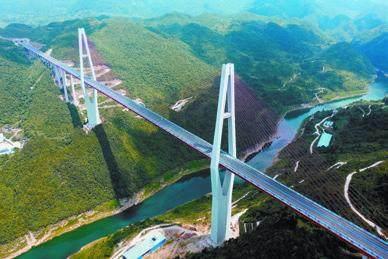A COMMITMENT FULFILLED

Xi Jinping, General Secretary of the Communist Party of China (CPC) Central Committee, Chinese President and Chairman of the Central Military Commission, delivers a speech at a ceremony marking the centenary of the CPC in Beijing on July 1.
He announced that China has realized the first centenary goal—building a moderately prosperous society in all respects. “This means that we have brought about a historic resolution to the problem of absolute poverty in China, and we are now marching in confident strides toward the second centenary goal of building China into a great modern socialist country in all respects,” Xi said. (See P.12-17 for more information)

High Bridge
An aerial photo taken on June 26 shows the Xiangjiang River Grand Bridge along the Zunyi-Yuqing Expressway in Guizhou Province. The 93-km-long expressway opened on July 1. It has been designed to cut the travel time between Zunyi City and Yuqing County, both in Guizhou, from three hours to about 70 minutes.
Plateau Railway
The first electrified railway in Tibet Autonomous Region opened on June 25, linking the regional capital Lhasa with the city of Nyingchi, as the Fuxing bullet trains enter official operation on the plateau region.
With a length of 435 km and a designed speed of 160 km per hour, the new railway is a single-line electrified railway. There are currently nine stations in the cities of Lhasa, Shannan and Nyingchi that can handle passenger and freight transportation.
The newly opened LhasaNyingchi Railway has provided southeast Tibet with access to railway services for the first time in history.
The railway reduces travel time from Lhasa to Nyingchi from five hours to approximately three and a half hours, and cuts the travel time from Shannan to Nyingchi from six hours to approximately two hours.
It is the first time that the Fuxing bullet trains, independently developed by China, are transporting passengers in Tibet. The train series have already been serving all other provinciallevel regions of the Chinese mainland.
The line passes through 47 tunnels and crosses 121 bridges, traversing the Yarlung Zangbo River no fewer than 16 times, with some 90 percent running at more than 3,000 meters above sea level. Tunnels and bridges account for approximately 75 percent of the total length of the railway.

